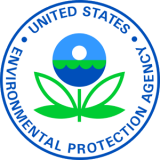EPA Announces York, Nebraska, Superfund Site to Receive Bipartisan Infrastructure Law Funding
EPA plans to use first $1B from Bipartisan Infrastructure Law to clear out the Superfund backlog and accelerate cleanup for dozens of additional Superfund projects

LENEXA, KAN. (DEC. 17, 2021) - Today, the U.S. Environmental Protection Agency (EPA) announced a $1 billion investment from the Bipartisan Infrastructure Law to initiate cleanup and clear the backlog of 49 previously unfunded Superfund sites, including the PCE Southeast Contamination Superfund Site in York, Nebraska. Until this historic investment, many of these were part of a backlog of hazardous waste sites awaiting funding.
“This work is just the beginning; with more than one in four Black and Hispanic Americans living within 3 miles of a Superfund site, EPA is working to serve people that have been left behind,” said EPA Administrator Michael S. Regan. “Approximately 60% of the sites to receive funding for new cleanup projects are in historically underserved communities. Communities living near many of the most serious uncontrolled or abandoned releases of contamination will finally get the protections they deserve.”
“Thanks to the funding through the Bipartisan Infrastructure Law, EPA will be able to expedite work on these Superfund sites and deliver environmental results for the people of York, Nebraska,” said EPA Region 7 Administrator Meghan A. McCollister. “We’re rolling up our sleeves and getting to work to accelerate cleanups at these sites and ensure that everyone lives in a healthy community, regardless of where it is or how big or small it may be.”
The PCE Southeast Contamination Site is located in York, Nebraska. Tetrachloroethene (PCE) and other volatile organic compounds (VOCs), including trichloroethene (TCE) and carbon tetrachloride (CCl4), have been identified in private drinking water wells at concentrations exceeding 5 micrograms per liter, which is the EPA maximum contaminant level for these VOCs. The remedy will treat PCE and TCE contamination in soil and prevent further impacts to the drinking water aquifer.
Learn more about the PCE Southeast Contamination Site.
The $1 billion investment is the first wave of funding from the $3.5 billion in the Bipartisan Infrastructure Law to help cleanup polluted Superfund sites in communities. The backlog of previously unfunded sites that will now be receiving funding are in 24 states and territories and all 10 EPA regions, including some communities who have been waiting for cleanup for more than four years.
EPA is committed to carrying out this work in line with President Biden’s Justice40 Initiative by advancing environmental justice and incorporating equity considerations into all aspects of the Superfund cleanup process. This will help ensure that historic and ongoing impacts of contamination on overburdened communities are fully considered and addressed.
Administrator Regan visited the Lower Darby Creek Area site in Pennsylvania, one of the many sites with ongoing work that will receive a boost from the historic Bipartisan Infrastructure Law funding. Along with new construction projects, infrastructure funds will be used to accelerate ongoing work and begin cleanup at additional Superfund sites in various stages of pre-construction and planning throughout the country.
These Superfund cleanup projects will make a visible and lasting difference in communities. In one Florida community, residents have been advocating for removal of creosote-contaminated soil in their neighborhood for years. At a New York site, lead-contaminated soil will be removed from people’s backyards. At a site in New Mexico, EPA will address the source area of a contaminated groundwater plume migrating towards a community.
The funds will supercharge the Superfund program to address the toll contaminated sites have on communities. EPA is finalizing cleanup plans and preparing funding mechanisms to get construction work started as soon as possible. More information about funding for backlogged sites and accelerated cleanup sites will be available in the coming weeks.
In 1980, the Comprehensive Environmental Response, Compensation and Liability Act, known as Superfund, was passed. The novel law gave EPA the authority and funds to hold polluters accountable for cleaning up the most contaminated sites across the country. When no viable responsible party is found or cannot afford the cleanup, funds appropriated by Congress are used. A tax on chemical and petroleum industries provided funds to the Superfund Trust fund for Superfund cleanups up until 1995. The Bipartisan Infrastructure Law reinstates the chemical excise taxes and invests an additional $3.5 billion in environmental remediation at Superfund sites, making it one of the largest investments in American history to address the legacy pollution that harms the public health of communities and neighborhoods.
The Bipartisan Infrastructure Law is a once-in-a-generation investment that will create millions of jobs modernizing our infrastructure, turn the climate crisis into an opportunity, and put us on a path to win the economic competition for the 21st century.
For more information and to see a list of the 49 sites to receive funding for new cleanup projects, please visit EPA’s website.
# # #
Learn more about EPA Region 7
View all Region 7 news releases
Connect with EPA Region 7 on Facebook: www.facebook.com/eparegion7
Follow us on Twitter: @EPARegion7
